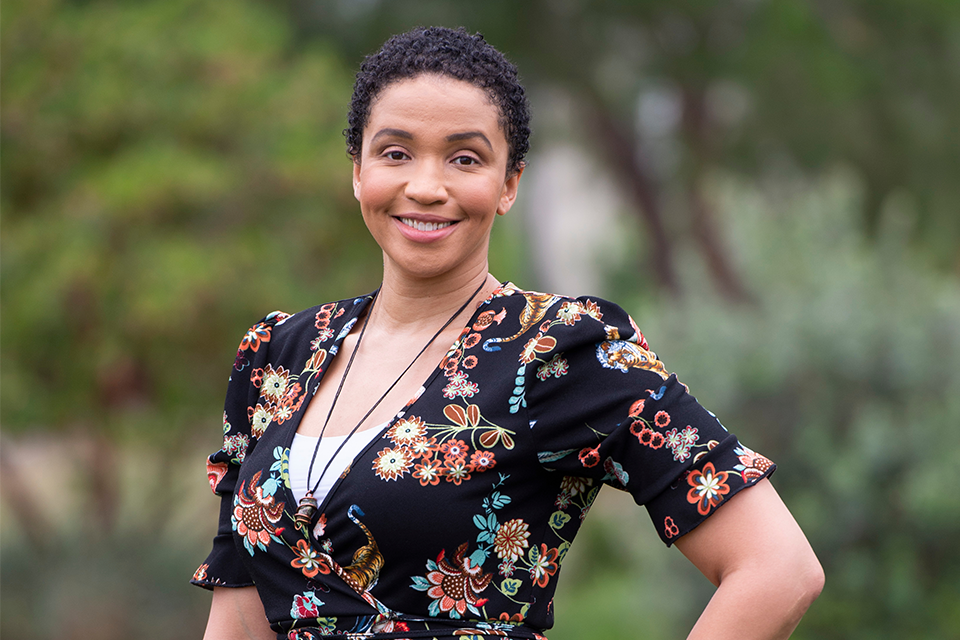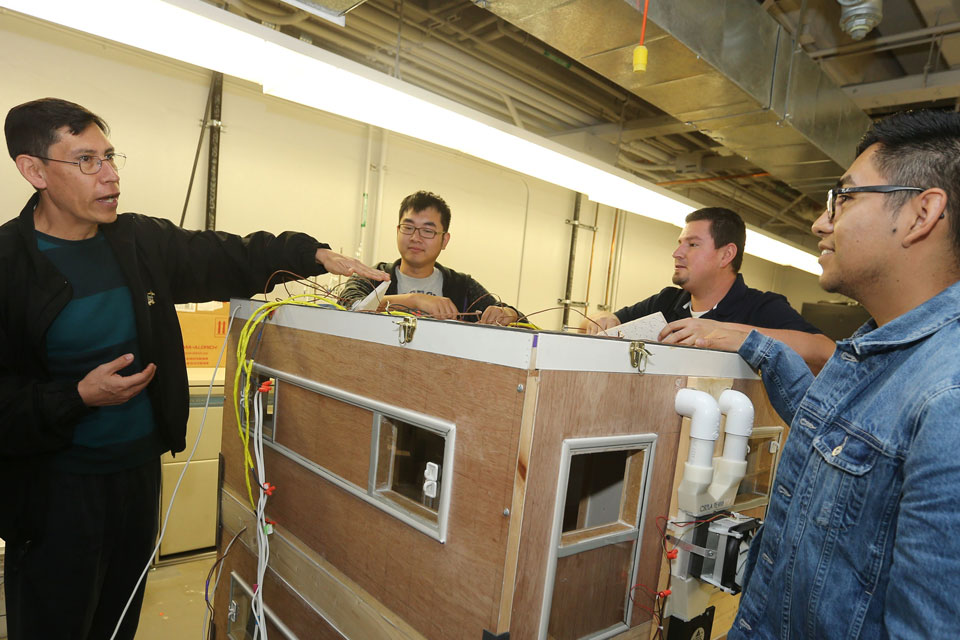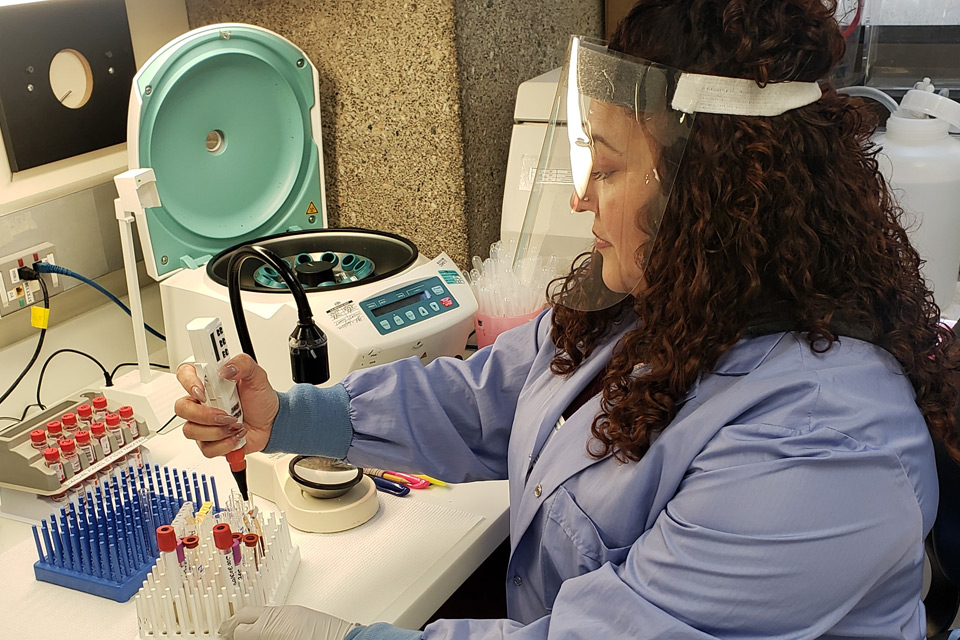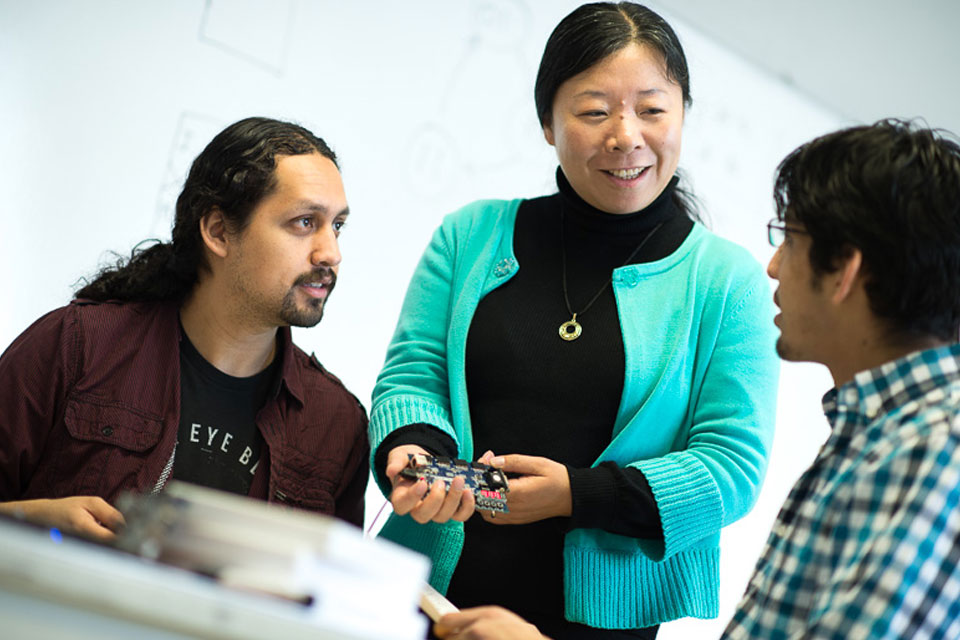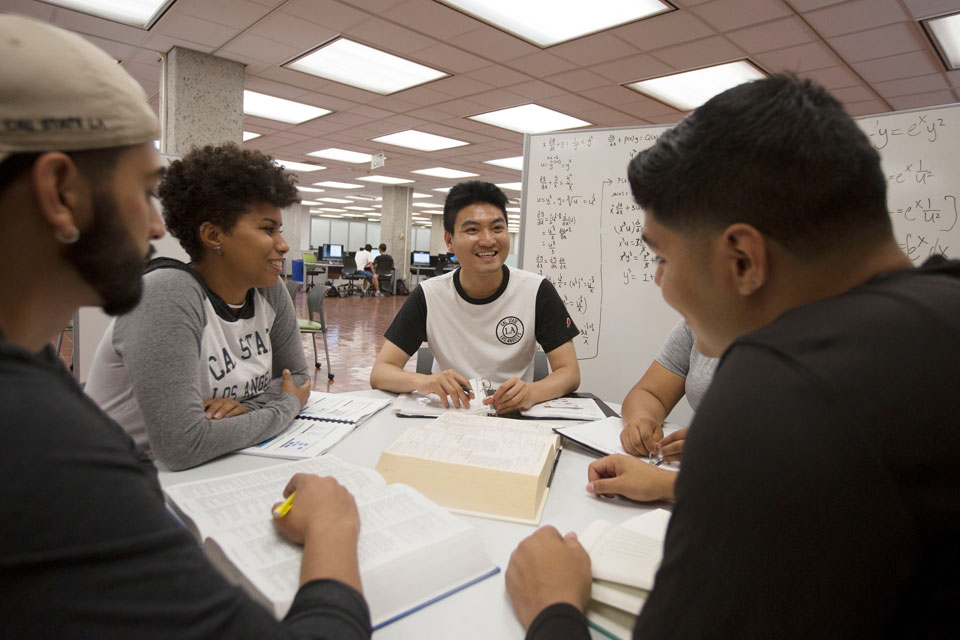Professor Marla Parker’s approach to connecting in the classroom is straightforward: She uses the technology and teaching tools at her disposal to “meet students where they are … but take them beyond that too.”
In adapting to these less-than-straightforward times, Parker is employing YouTube and Instagram as platforms that are familiar and accessible to students; experimenting with Camtasia video software to make her online lectures more dynamic; and applying the advanced tools available in Canvas, Cal State LA’s learning management system.
Parker is an assistant professor in the Department of Political Science starting her fifth year at Cal State LA. For her, the fall semester is an opportunity to keep adjusting to our collective new circumstances.
What won’t change is Parker’s devotion to principles of social justice to promote inclusion and belonging and to prepare students to make meaningful contributions to their communities after they graduate.
“I want students to feel as if they can go out and make changes in the world and that their education is a vehicle for that,” Parker says.
We caught up with Parker to discuss how she is preparing for the fall, as part of an ongoing series on faculty members working to develop innovative and engaging virtual instruction.
What courses are you teaching in the fall?
Parker is teaching undergraduate students in Government and American Society and a senior capstone research seminar. Her two other classes are Foundations of Public Administration (undergraduates and graduates) and Managing Intergovernmental and Intersectoral Relations (graduates).
What lessons did you learn from remote instruction in the spring?
“Last semester was definitely a natural experiment, I think for all of us, to try to figure out how you scale super quickly,” Parker says. “It’s one thing to have maybe one or two of your classes online, but it’s another thing to have everything online.”
As an experienced online instructor, Parker was positioned well for the transition to remote learning. Her spring section of Government and American Society was already fully online, for example.
“I didn’t want to be too disruptive,” Parker says. For each of her courses, she considered the number of students, their level in school and where they were in the syllabus as she implemented changes once the transition to remote instruction began.
Parker amplified her usual approach (“overcommunicate as opposed to undercommunicate, so that students know I’m there”) by increasing Zoom hangout hours for each course. She arranged Saturday hangouts with her graduate students, as most are working professionals.
How do you plan to keep your students engaged in the fall?
“I focus a lot on self-care because I do recognize that it’s difficult to learn if you’re not in a solid, healthy place,” Parker says. “I approach teaching from a holistic perspective. So, it’s not just your intellectual growth but definitely your personal growth as well.”
Parker lists advice and resources about wellness at the top of her syllabi, even before the course descriptions.
When her nearly three-hour-long graduate seminar was meeting in person, Parker blocked out 10 minutes at the start of each session for meditation. She plans to encourage students to meditate on their own, using the quiet time to become centered and prepared to learn, while studying in remote mode this semester.
One timely lesson she strives to impart to students is that “quite a bit of work is online now.”
“The principles that you need as a successful online student, some of that is transferable as an online employee,” Parker says. “This is part of the benefit of having an online class environment. In a way you’re getting them prepared for the virtual work world.”
What new features or approaches are you incorporating into your virtual courses?
Parker sees the fall semester as a chance for further adaptation and experimentation.
For her Foundations of Public Administration class, for example, Parker has recorded introductory 10-minute lectures, each accompanied by a deck of lecture slides and supplemental material to encourage students’ self-study, all accessible in Canvas.
And knowing how her students consume social media, she has created a YouTube channel to which they subscribe. Whenever new lectures are posted, they receive a notification; they don’t necessarily have to keep checking Canvas.
Parker hopes to encourage greater peer-to-peer learning, and give students additional opportunities to be creative, through the increased use of discussion boards and having them maintain class Instagram pages for sharing their work.
“I can only get so far with my teaching with my students,” Parker says. “When they work together, there is this other kind of magic that happens. … I want to try to leverage that more online.”
What else are you looking forward to in the fall?
“There’s always space to learn,” Parker says. With that in mind, she used the summer to refine her approach to videos and other teaching tools, in part through consultation with colleagues in Cal State LA’s Center for Effective Teaching and Learning.
Knowing that students are also still adjusting, Parker joined with Dmitri Seals, a lecturer in the Department of Sociology, to develop a one-hour seminar, “Thriving in Online Classes.” It covers such subjects as coping with the absence of privacy at home, managing technology and communicating with instructors remotely.
With the experience of the spring, Parker says she is looking forward to the start of the new academic year. “Now that we have that semester under our belt, I feel like I know what I have to do.”
RELATED:
Faculty innovation in the virtual classroom: Q&A with Socorro Orozco, Charter College of Education
Faculty innovation in the virtual classroom: Q&A with Michael Willard, College of Arts and Letters
# # #
California State University, Los Angeles is the premier comprehensive public university in the heart of Los Angeles. Cal State LA is ranked number one in the United States for the upward mobility of its students. Cal State LA is dedicated to engagement, service, and the public good, offering nationally recognized programs in science, the arts, business, criminal justice, engineering, nursing, education, and the humanities. Founded in 1947, the University serves more than 26,000 students and has more than 250,000 distinguished alumni.
Cal State LA is home to the critically-acclaimed Luckman Fine Arts Complex, Pat Brown Institute for Public Affairs, Hertzberg-Davis Forensic Science Center, Hydrogen Research and Fueling Facility, Billie Jean King Sports Complex and the TV, Film and Media Center. For more information, visit www.CalStateLA.edu.

